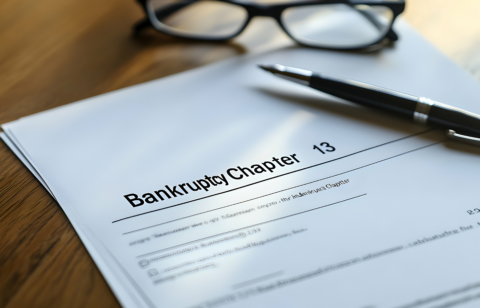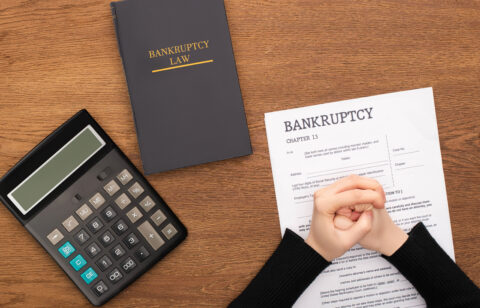Bankruptcy is often seen as a last resort for individuals and businesses drowning in debt. It offers a legal way to manage, restructure, or discharge debt, providing a fresh start for those unable to meet their financial obligations.
Two of the most common types of bankruptcy in the U.S. are Chapter 7 and Chapter 11. While both can help alleviate financial burdens, they operate differently and serve distinct purposes.
This article will help you understand the differences between Chapter 7 and Chapter 11 bankruptcies, explore who qualifies, and guide you in choosing the best option based on your financial situation.
What Is Chapter 7 Bankruptcy?
Chapter 7 bankruptcy is often referred to as “liquidation bankruptcy.” It’s typically the go-to option for individuals or businesses that are overwhelmed by debt and lack the financial means to pay it back. Here’s how it works:
Eligibility
To qualify for Chapter 7 bankruptcy, individuals must pass a means test, which compares their current monthly income to the median income in their state for a household of the same size. If your income is below the state median, you typically qualify.
In addition to the means test, individuals must also:
- Have received credit counseling from an approved agency within 180 days before filing.
- Not have had a Chapter 7 case dismissed within the past 180 days for certain reasons (like violating a court order or filing fraudulently).
Businesses (such as corporations, partnerships, or LLCs) can also file for Chapter 7 if they are no longer operating or are unable to pay their debts. Unlike individuals, businesses do not need to pass a means test and are not eligible for a discharge—the business is simply liquidated, and assets are used to pay creditors.
Process
- Upon filing, a trustee is appointed by the court to oversee the case.
- The trustee liquidates any non-exempt assets (those not protected under state or federal law), using the proceeds to pay creditors in a prioritized order.
- Any remaining eligible debts are discharged, meaning the individual or business is no longer legally required to pay them.
Pros
- Quick debt relief: Most Chapter 7 cases are resolved in a few months.
- Discharge of unsecured debts: Common debts like credit card bills and medical expenses are wiped clean.
Cons
- Loss of non-exempt assets: Any property not protected under bankruptcy exemptions may be sold to repay creditors.
- Credit impact: A Chapter 7 bankruptcy can remain on your credit report for up to 10 years, which may make it more difficult to qualify for credit, loans, or favorable interest rates in the short term.
Who Should File?
Chapter 7 bankruptcy can be a viable choice for individuals with low income and limited assets who cannot pay their debts and need a fresh start. Businesses that have no viable future and want to liquidate their assets to satisfy creditors might also choose this type of bankruptcy.
What Is Chapter 11 Bankruptcy?
Chapter 11 bankruptcy, often called “reorganization bankruptcy,” is more complex and is primarily used by businesses that want to restructure their debts while continuing to operate. However, some high-income individuals or those with significant assets may also file for Chapter 11.
Eligibility
Chapter 11 bankruptcy is available to businesses of all sizes—including corporations, LLCs, partnerships, and even sole proprietors—that need to reorganize their debts while continuing operations. It’s most commonly used by larger businesses, but individuals with substantial debt who don’t qualify for Chapter 7 or Chapter 13 can also file Chapter 11 to restructure their finances while retaining assets.
Small businesses can take advantage of a more efficient and cost-effective process through Subchapter V of Chapter 11, which was introduced to simplify the reorganization process and reduce legal expenses for qualifying small business debtors.
Process
- Upon filing, the debtor typically remains in control of business operations as the debtor-in-possession. This differs from Chapter 7, where a trustee takes over.
- The debtor proposes a reorganization plan, which must be approved by the creditors and the court.
- The business may renegotiate loan terms, sell some assets, and cut costs to become profitable again.
- The goal is to emerge from bankruptcy as a healthier entity, with a manageable debt load.
Pros
- Continue operating: The business remains open and can work toward long-term financial recovery.
- Debt restructuring: Loan terms, interest rates, and repayment schedules can be renegotiated.
Cons
- Costly and time-consuming: Chapter 11 is more expensive, with legal fees often exceeding $20,000. The process can also take years to complete.
- Credit impact: Like Chapter 7, Chapter 11 can stay on your credit report for 10 years.
Who Should File?
Chapter 11 bankruptcy is most commonly used by businesses that are struggling with debt but have the potential to become profitable again. High-income individuals or those with significant assets who want to restructure their debt rather than liquidate their property might also choose to file Chapter 11 bankruptcy.
Chapter 7 vs Chapter 11: Key Differences
| Chapter 7 | Chapter 11 | |
| Purpose | Liquidation of assets | Reorganization of debts |
| Who Files? | Individuals and businesses | Primarily businesses, some individuals |
| Control of Assets | Trustee takes over assets | Debtor remains in control |
| Operations | Business ceases operations | Business continues operating |
| Costs | Lower, flat fees ($750 – $3,000) | Higher, hourly fees ($20,000+) |
Choosing Between Chapter 7 and Chapter 11
When to Choose Chapter 7
- Unmanageable unsecured debt: If you have overwhelming credit card debt, personal loans, or medical bills, Chapter 7 may be your best option.
- Low income: If your income is below the state median, Chapter 7 can be easier to qualify for.
- Ready to shut down: If your business is no longer viable and you want to liquidate and move on, Chapter 7 is the better choice.
When to Choose Chapter 11
- Retaining assets: If you have significant assets you wish to protect, Chapter 11 allows you to restructure your debts without liquidating everything.
- Viable business: Businesses that are struggling but have the potential to return to profitability should consider Chapter 11.
- High-income individuals: If your income exceeds the Chapter 13 limits, but you want to avoid liquidation, Chapter 11 may be a viable option.
The Bottom Line
Chapter 7 provides a quicker path to debt discharge but involves liquidating assets and shutting down businesses. On the other hand, Chapter 11 allows businesses to reorganize and continue operating, but it is more expensive and time-consuming.
For individuals and businesses alike, the decision to file for bankruptcy should be made with the help of a legal or financial professional to ensure the best possible outcome for your financial future.





